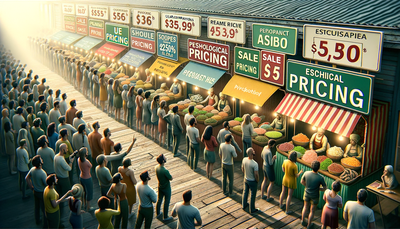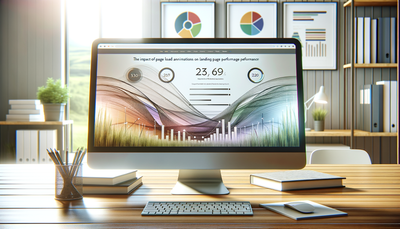Designing for Emotional Impact: Creating Memorable User Experiences
Designing for emotional impact is a powerful approach to creating memorable user experiences on the web. By carefully crafting elements that evoke specific emotions, designers can leave lasting impressions on users and create meaningful connections. This article explores the techniques and strategies for using color, imagery, and interactive elements to create emotionally resonant experiences. We'll delve into the psychology behind emotional design, discuss practical implementation methods, and showcase examples of successful emotional impact in web design. Whether you're a seasoned designer or just starting out, this guide will help you harness the power of emotion to create unforgettable user experiences.Table of Contents:

Understanding Emotional Design
Emotional design is the practice of creating experiences that elicit specific emotional responses from users. It goes beyond mere functionality and aesthetics, aiming to forge a deeper connection between the user and the digital product. By tapping into human emotions, designers can create more engaging, memorable, and impactful experiences.The foundation of emotional design lies in understanding the core emotions that drive human behavior. These include joy, surprise, anger, disgust, fear, and sadness. By strategically incorporating elements that trigger these emotions, designers can guide users through a carefully crafted emotional journey, ultimately leading to a more satisfying and memorable experience.
Do you need a website? Want to build a website but don't know where to start? Our website builder is the perfect solution. Easy to use, and with the ability to customize to fit your business needs, you can have a professional website in no time.
The Power of Color in Emotional Design
Color is one of the most potent tools in a designer's arsenal when it comes to evoking emotions. Different colors can trigger various psychological responses and set the tone for the entire user experience. For example, warm colors like red and orange can evoke feelings of excitement and energy, while cool colors like blue and green can create a sense of calm and trust.When designing for emotional impact, it's crucial to consider the cultural context and target audience. Color associations can vary across cultures, so what works in one region may not be effective in another. Additionally, the combination of colors and their placement within the design can further amplify or modify the emotional response. By thoughtfully selecting and applying colors, designers can create a visual language that speaks directly to the user's emotions.
Imagery and Its Emotional Impact
Images have the power to instantly convey complex emotions and ideas, making them invaluable in emotional design. Whether through photography, illustrations, or icons, visual elements can create an immediate emotional connection with users. The key is to choose imagery that aligns with the desired emotional response and supports the overall message of the website.When selecting images, consider factors such as composition, subject matter, and style. For example, close-up shots of people's faces can create a sense of intimacy and connection, while wide-angle landscapes can evoke feelings of awe and wonder. The use of consistent imagery throughout a website can help reinforce the intended emotional tone and create a cohesive user experience.
Building a website with SITE123 is easy
Interactive Elements and Emotional Engagement
Interactive elements play a crucial role in creating emotionally impactful user experiences. By engaging users through movement, sound, and tactile feedback, designers can create a more immersive and memorable experience. Microinteractions, such as subtle animations or responsive hover effects, can add delight and surprise to the user journey.When implementing interactive elements, it's essential to strike a balance between engagement and usability. While innovative interactions can create a wow factor, they should never come at the expense of functionality or accessibility. Consider using progressive enhancement techniques to ensure that the core experience remains solid for all users, while adding emotional layers through interactivity for those with more capable devices.
Typography and Emotional Resonance
Typography is often overlooked in emotional design, but it plays a significant role in setting the tone and evoking emotions. The choice of typeface, font size, and text layout can greatly influence how users perceive and feel about the content. For example, serif fonts can convey a sense of tradition and reliability, while sans-serif fonts often feel more modern and clean.When designing for emotional impact, consider the personality of the typeface and how it aligns with your brand and message. Experiment with font pairings to create contrast and hierarchy, guiding the user's emotional journey through the content. Pay attention to line length, spacing, and readability to ensure that the typography supports rather than hinders the emotional connection.
Storytelling and Emotional Connection
Storytelling is a powerful tool for creating emotional connections with users. By weaving a narrative throughout the user experience, designers can engage users on a deeper level and create a more memorable journey. This can be achieved through a combination of visual elements, copy, and user flow.When incorporating storytelling into your design, consider the overall arc of the user's journey through the website. Use visual cues, micro-copy, and interactive elements to guide users through the narrative, revealing information and evoking emotions at key points. Personal stories, testimonials, and case studies can also be effective in creating emotional resonance, helping users relate to the content on a more personal level.
Measuring Emotional Impact
To ensure that your designs are truly creating the desired emotional impact, it's important to measure and analyze user responses. This can be done through a combination of quantitative and qualitative methods, including user surveys, A/B testing, and user interviews.When gathering feedback, focus on both the immediate emotional response and the long-term impact of the design. Ask users about their feelings during and after using the website, and observe their behavior to identify any emotional triggers or pain points. Use this feedback to iterate and refine your designs, continuously improving the emotional resonance of the user experience.





